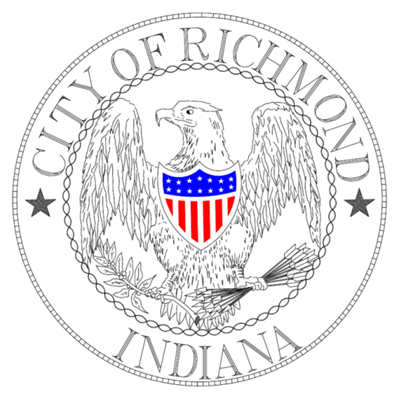The parks system in Richmond began in 1880, with the city acquiring the land that would become South 10th Street Park. This land was given to the city by the homeowners in that neighborhood who had purposely built their houses further from the road, with the intention of creating a park. Many years before it became a park, South 10th Street Park was also home to Camp Wayne, which served as a training camp for many of Indiana’s volunteer regiments during the Civil War. Within the park, there is a plaque that commemorates Camp Wayne.
Just five years after the creation of the first park of Richmond, the land for a second park was purchased from Colonel John Ford Miller. In 1885, Glen Miller Park was opened to the public. The park, famed for its springs and natural beauty, would later be home to a zoo, the Madonna of the Trail monument, and the Richmond Rose A.A.R.S. Garden. Glen Miller Park was also the home of Chautauqua, an annual event with educational and musical programming, from 1903 to 1923. This event drew many people to Glen Miller Park to camp during the festivities that were scheduled over two weeks each summer.
Starr Park was acquired in the early 1900s. The park, which included Hoover Cemetery, received few improvements from the city, and was ultimately sold to create the North 9th Street overpass. The cemetery was also moved at this time. There is a memorial denoting the former location of Starr Park in downtown Richmond.
Also acquired during the early 1900s were Clear Creek Park and Mary Scott Park. Mary Scott Park was originally named Northwest 7th St Park, and was the first park on the west side of Richmond. The wooded land where the park now sits was originally owned by the Peacock family and was in danger of being developed. Concerned citizens called upon the city to create a park in order to protect the natural beauty of the area. In 1911, the land was purchased by the city and became part of the Richmond parks system. Today, Mary Scott Park is home to the Burgess log cabin. Originally built in the 1820’s by Samuel Burgess, the cabin was sold at auction by George Scantland in 1945. Robert E. Graham and other local businessmen bought the cabin together and donated it to the city.
Middlefork Reservoir was built in the early 1960s to provide the city of Richmond with water. American Water Works leased the reservoir to the City of Richmond in April of 1968, and the lease continues today. Middlefork Reservoir is also the home of Hill’s Bark Park, the only off-leash dog park in Richmond.
Springwood Park was also acquired within the same time period as Middlefork Reservoir. Formerly Conservation Park, Springwood was previously owned by the Richmond Conservation Club from the 1940s until 1970, when the land was purchased by the city through a Federal Open Space Grant. Springwood Park is home to a small lake and a natural swamp area that is used for study.
The newest parks to the Richmond parks system as of 2013 were Wernle Park, which has yet to be developed, and Bicentennial Park. The process for acquiring the land for Bicentennial Park began in 1976. Bicentennial Park is within the flood plain of the White River and is intended to give the public access to the peaceful river environment and the geologically significant outcropping of limestone. With limestone comes fossils, and an Earlham professor and students have started a Fossil Park within Bicentennial Park to take advantage of the opportunity to see these artifacts from the geological past.
More recently, Richmond, Indiana won the national “Playful City USA” award in 2009 and was chosen for the award again in 2015, 2016 and 2017. Richmond was recognized for making the community a national role model, leading the way for play, and growing the next generation of healthy and productive adults.
The parks system in Richmond has grown immensely since the first established park in 1880. We encourage you to visit each of these parks with a better sense of how they became the parks they are today.




